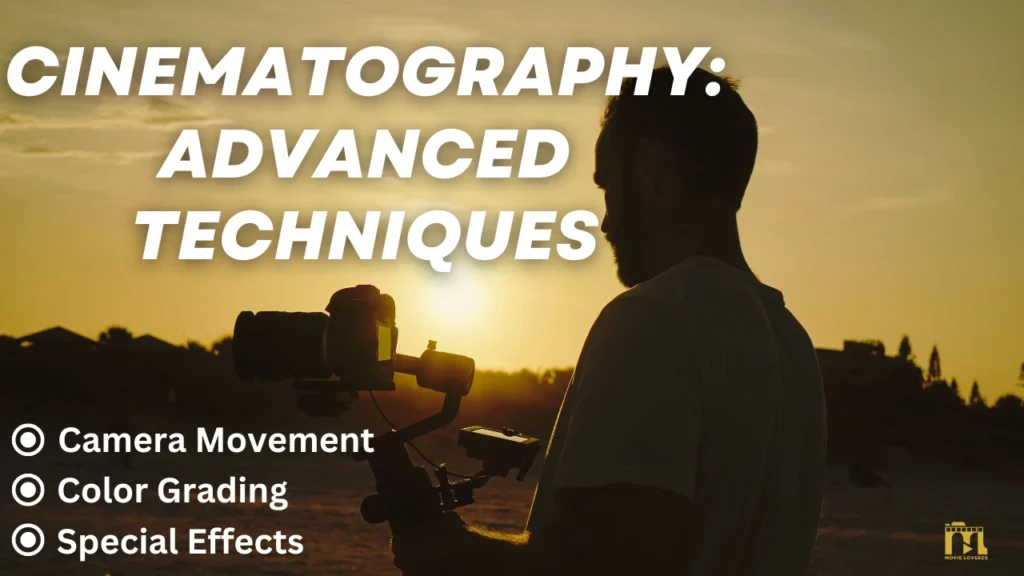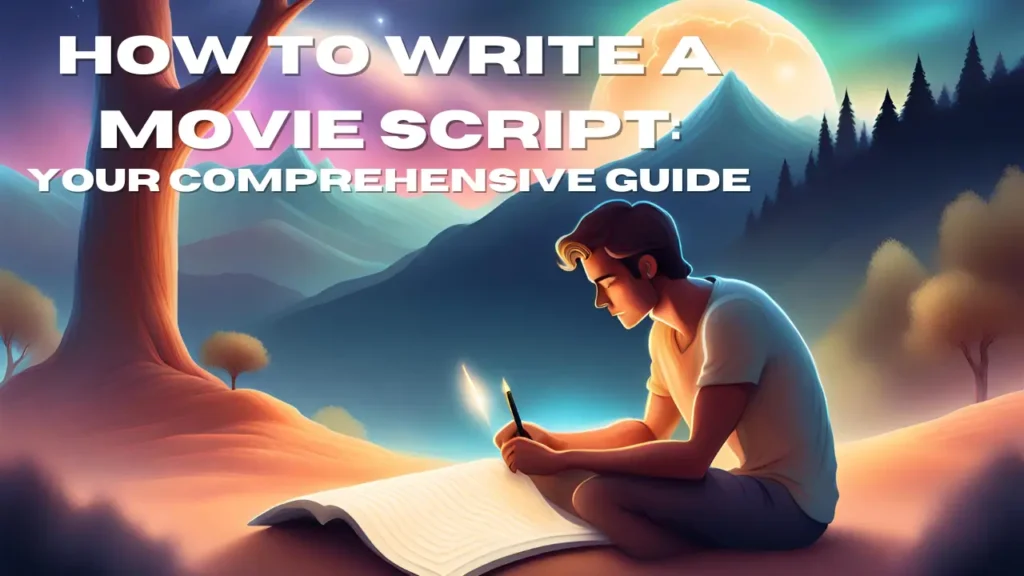Table of Contents
ToggleCinematography is the art of capturing and creating visual images that tell a story. It is an essential part of the filmmaking process, and it can have a significant impact on how a story is conveyed to the audience.
A great cinematographer can make an average film look amazing, while a bad one can ruin even the best story.
In this guide, we will delve into the world of cinematography and explore the various techniques and tools that are used to create stunning visuals.
The Basics of Cinematography

Before we dive into the specifics of cinematography, let’s start with the basics. Every cinematographer should have a good understanding of the following concepts:
Shot Types
The type of shot you use can have a significant impact on the emotion and meaning of the scene. There are several types of shots, including:
- Long Shot (LS): A shot that shows the entire subject from a distance. This shot is often used to establish the location or to show the subject in its environment.
- Medium Shot (MS): A shot that shows the subject from the waist up. This shot is often used for dialogue scenes or to show the subject’s body language.
- Close-up (CU): A shot that shows the subject’s face or a specific detail. This shot is often used to convey emotion or to emphasize a particular object or detail.
- Extreme Close-up (ECU): A shot that shows a very close-up detail of the subject. This shot is often used to create tension or to emphasize an object’s significance.
Composition
Composition is the arrangement of visual elements in a shot. A good composition can enhance the mood and meaning of the scene. Some essential composition techniques include:
- Rule of Thirds: A composition technique that divides the frame into thirds both vertically and horizontally. The subject should be placed on one of the intersecting points.
- Leading Lines: Lines that lead the viewer’s eye to the subject. This technique is often used to create a sense of movement or to draw attention to the subject.
- Framing: Using objects within the shot to frame the subject. This technique is often used to create a sense of confinement or to emphasize the subject’s importance.
Lighting
Lighting can have a significant impact on the mood and emotion of a scene. The following are some essential lighting techniques:
- Three-Point Lighting: A lighting technique that uses three lights to illuminate the subject. The key light is the primary light source, the fill light fills in the shadows, and the backlight separates the subject from the background.
- High-Key Lighting: A lighting technique that uses bright, even lighting to create a cheerful, optimistic mood.
- Low-Key Lighting: A lighting technique that uses dark, shadowy lighting to create a sense of mystery or danger.
Advanced Cinematography Techniques

Now that we’ve covered the basics let’s explore some advanced cinematography techniques.
Camera Movement
Camera movement can create a sense of movement, urgency, or emotion. Some common camera movements include:
- Pan: Moving the camera horizontally across a scene.
- Tilt: Moving the camera vertically up or down.
- Zoom: Adjusting the focal length of the camera lens to make the subject appear closer or further away.
- Dolly: Moving the camera physically closer to or further away from the subject.
- Crane: Moving the camera vertically up or down using a crane.
Color Grading
Color grading is the process of adjusting and enhancing the colors of a shot. It can have a significant impact on the mood and emotion of the scene. Some essential color grading techniques include:
- Color Correction: Adjusting the colors to make them more balanced and natural.
- Color Grading: Enhancing the colors to create a specific mood or atmosphere.
- Color Contrast: Using contrasting colors to create a sense of tension or drama.
Special Effects
Special effects can be used to create a sense of magic or wonder in a scene. Some common special effects include:
- CGI: Computer-generated imagery that can create objects or environments that do not exist in real life.
- Practical Effects: Physical effects that are created on set using props, makeup, or other practical means.
- Green Screen: A technique where actors are filmed in front of a green screen, and the background is replaced with a different image in post-production.
FAQs
What equipment do I need to become a cinematographer?
While having professional equipment can be helpful, it is not essential to becoming a great cinematographer. Focus on developing your skills and creativity with the equipment you have access to.
Can I use natural lighting for cinematography?
Yes, natural lighting can be used to create beautiful and atmospheric shots. However, it can be challenging to control, so you may need to be creative with your shot composition and camera angles.
How do I choose the right shot type for my scene?
Consider the emotion and meaning you want to convey in the scene. Experiment with different shot types and see which one feels most appropriate for the moment.
Do I need to have a film school degree to become a cinematographer?
While a film school degree can be helpful, it is not necessary to become a successful cinematographer. Many successful cinematographers have learned their craft through hands-on experience and experimentation. However, a film school degree can provide valuable knowledge and connections in the industry.
How important is color grading in cinematography?
Color grading can have a significant impact on the mood and emotion of a scene. It is an essential part of the post-production process and can make a good shot look great.
What’s the best way to practice cinematography?
Start by studying the work of other filmmakers and analyzing their techniques. Then, practice with the equipment you have access to and experiment with different shot compositions, lighting, and camera movements.
How can I create cinematic shots without professional equipment?
Focus on the fundamentals of shot composition, lighting, and storytelling. With creativity and resourcefulness, you can achieve cinematic shots with even basic equipment.
How do I choose the right camera for my project?
Consider the needs of your project, such as budget, shooting conditions, and desired image quality. Do your research and test out different cameras before making a final decision.
What’s the most important thing to remember when shooting a film?
Always keep the story and the audience in mind. Every shot should serve the narrative and engage the viewer emotionally.
Conclusion
Cinematography is an art form that requires both creativity and technical expertise. From shot composition to lighting to special effects, there are many different tools and techniques that can be used to create stunning visuals that capture the essence of your story.
By understanding the basics of cinematography and exploring some advanced techniques, you can take your filmmaking to the next level and create truly remarkable films that engage and inspire your audience.






